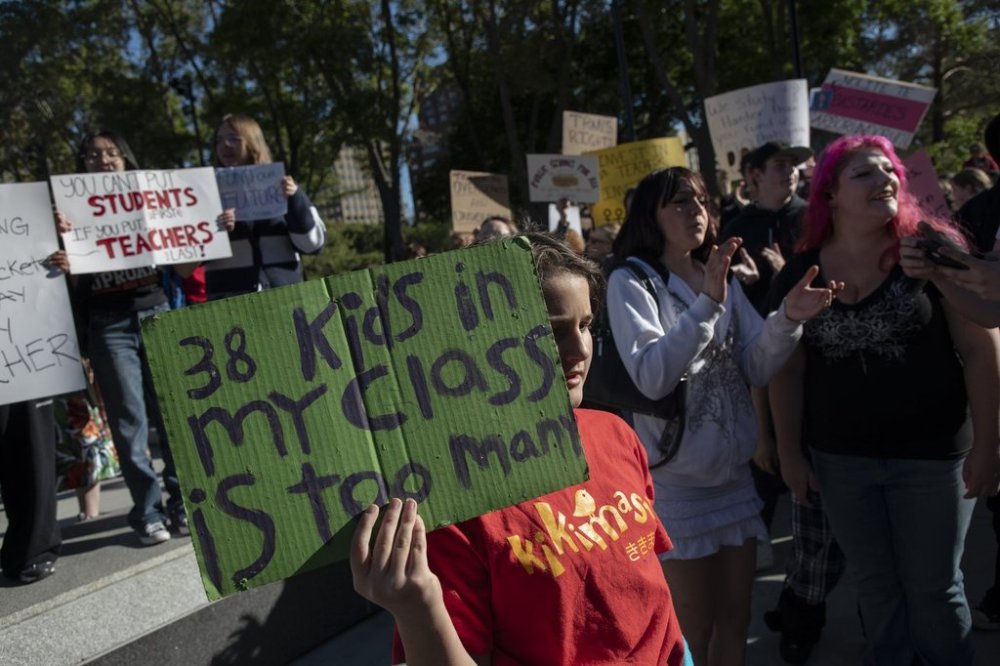As strike looms, teachers, Alberta government say up to other side to restart talks
Advertisement
Read this article for free:
or
Already have an account? Log in here »
We need your support!
Local journalism needs your support!
As we navigate through unprecedented times, our journalists are working harder than ever to bring you the latest local updates to keep you safe and informed.
Now, more than ever, we need your support.
Starting at $15.99 plus taxes every four weeks you can access your Brandon Sun online and full access to all content as it appears on our website.
Subscribe Nowor call circulation directly at (204) 727-0527.
Your pledge helps to ensure we provide the news that matters most to your community!
To continue reading, please subscribe:
Add Brandon Sun access to your Winnipeg Free Press subscription for only
$1 for the first 4 weeks*
*$1 will be added to your next bill. After your 4 weeks access is complete your rate will increase by $4.99 a X percent off the regular rate.
Read unlimited articles for free today:
or
Already have an account? Log in here »
EDMONTON – With talks stalled and just days to go until Alberta’s teachers go on strike, their union and the province agreed Thursday on one thing — it’s up to the other side to pick up the phone.
“We’re always interested in having negotiations and returning to the table and talking about the issues that teachers want to see addressed through the collective agreement,” Jason Schilling, president of the Alberta Teachers’ Association, said in an interview.
“It’s whether or not government is willing to come to the table with some serious intentions to address those issues.”

But Education Minister Demetrios Nicolaides said the ball is in the union’s court.
“We are … still very happy to engage in negotiations,” the minister said in an interview. “So we are ready and standing by to receive any additional proposals or thoughts from the ATA union leadership.”
Both Schilling and Nicolaides confirmed Thursday that further negotiation talks haven’t been scheduled ahead of Monday’s deadline.
The he-said-he-said comes as the union and Alberta’s government remain at a stalemate over several concerns, mainly wages and working conditions. Earlier this week, nearly 90 per cent of union members who voted rejected the province’s latest offer, leading to Monday’s strike deadline.
A walkout by the union’s 51,000 members would impact more than 700,000 students across 2,500 public, separate and francophone schools.
The rejected offer included a 12-per-cent pay raise over four years, a government promise to hire 3,000 more teachers to address class sizes and money to cover the cost of a COVID-19 vaccine. Finance Minister Nate Horner has long said it was a good deal.
Schilling said Thursday the hiring figure in the offer is a drop in the bucket compared to what’s needed, noting that the province needs to hire at least 5,000 more instructors to align with student-teacher ratios.
Those ratios, based on government figures released in 2002 when teachers last went on strike, vary by grade level. Kindergarten to Grade 3 classrooms would have 13 children per teacher, while those for junior high and high school would sit at 27 students per teacher.
It also included a model and a formula to address complexity, Schilling said.
“When you look at those targets and the equal numbers, we are probably about 5,000-plus teachers behind what should have been hired by government,” he said.
Asked how much of a difference those extra hires would make compared with the government’s offer, Schilling said it would be significant. He wouldn’t commit to bringing that number to the bargaining table.
“For instance, where you have schools that might have a class that’s 42, you could hire another teacher to split that class,” he said.
“If you have large classes of 35 that have a lot of needs within that classroom, but you don’t have the ability to split it, you could have two teachers working in that room … Schools would be very creative with how teachers could be utilized.”
Nicolaides said he hadn’t heard the 5,000 figure before but said “additional ideas are welcome.”
As for student-teacher ratios to address class sizes, he said the government is taking steps, such as building and expanding schools, hiring teachers and educational assistants, and increasing wages, noting the “dramatic” increase in the number of students enrolled in Alberta’s schools.
“Our focus is on taking real, tangible and meaningful steps to increasing capacity,” he said.
This report by The Canadian Press was first published Oct. 2, 2025.
